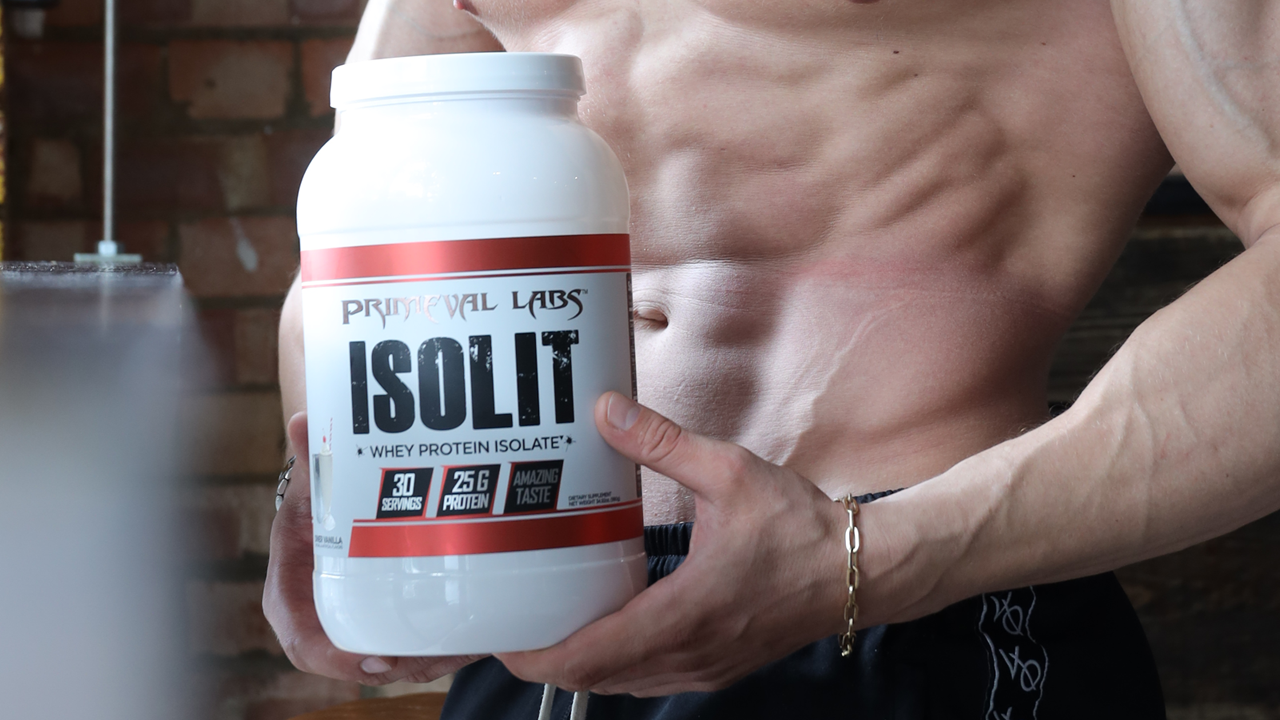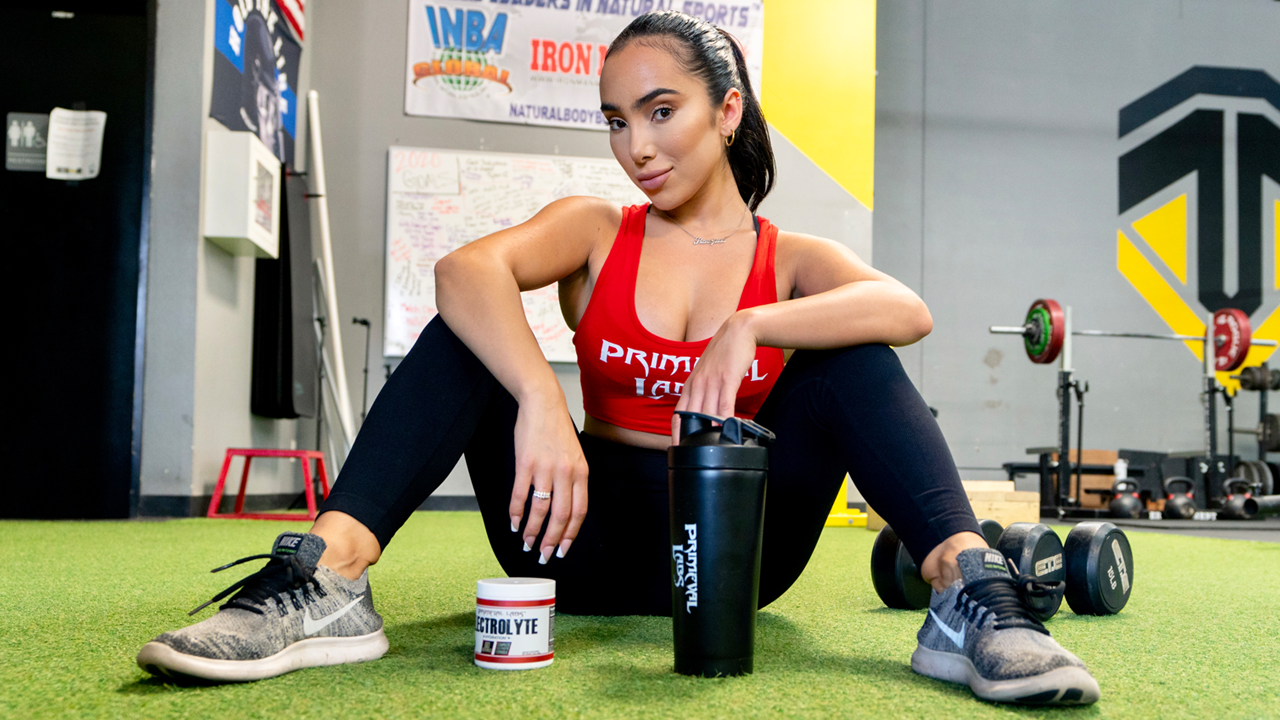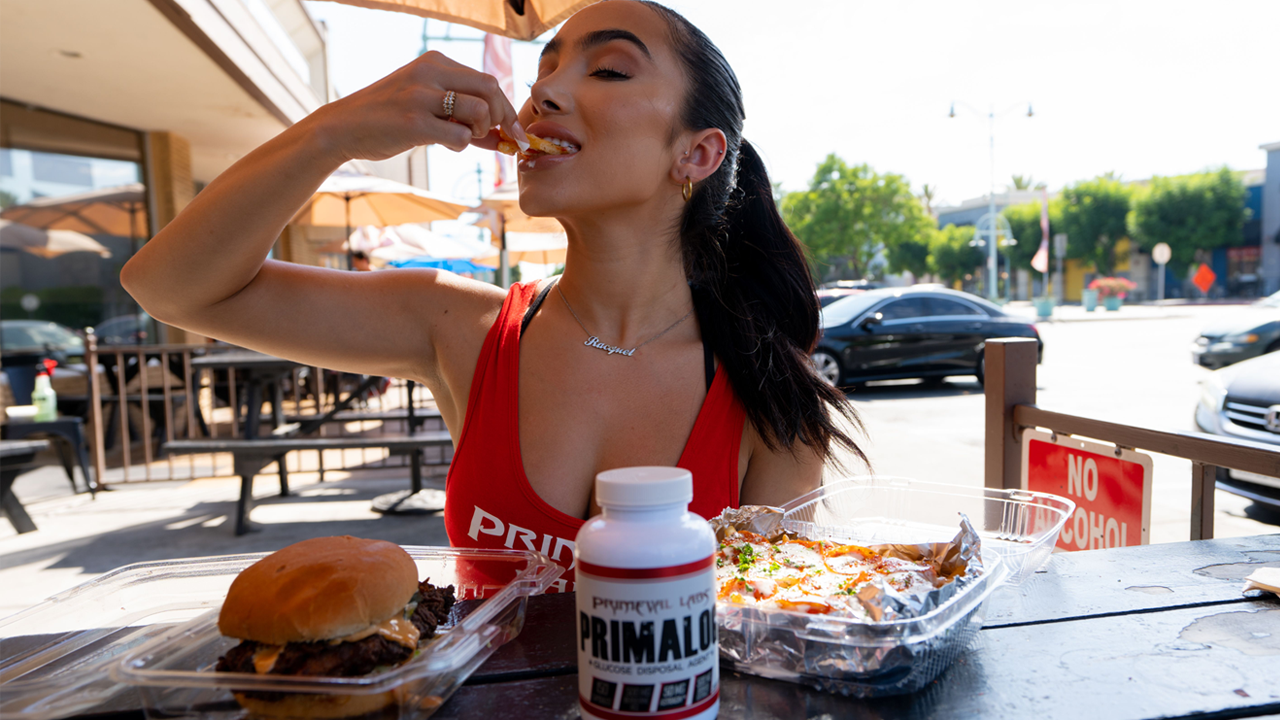Whey protein is one of the most popular supplements on the market, and for good reason -- it’s affordable, easy to fix, high in protein, and delicious.
In fact, it’s considered a “must have” supplement for many physically active individuals, not just the ones who are interested in building muscle.
Much like pre workout supplements, there is no shortage of options when it comes to selecting a whey protein powder.
You can find some protein powders for as cheap as $10 per tub while others can go for 5-7x as much!
But, as you’re about to see, not all whey protein powders are created the same.
In fact, there are three (or four) different types of whey protein you’ll find on the market.
Today, we’ll take a deep dive into all things whey protein and help you find the best one for your needs!
What is Whey Protein?
Whey protein is a by-product of the cheese making process.
It is the thin milky-looking liquid leftover once the milk has been curdled and strained.
In decades past, this liquid was viewed as nothing but a mere waste product and was casually thrown away. However, once food manufacturers realized it was a rich source of protein, the view on whey changed, and it became a staple supplement for athletes and weekend warriors around the world.
Whey accounts for 20% of the total protein content of milk, while casein (the curd-forming protein in milk) accounts for the remaining 80% of protein.
Whey is considerably faster digesting than casein protein, which is why it is the preferred post-workout protein supplement for most fitness enthusiasts.
Whey protein is also extremely bioavailable and high in leucine, an essential amino acid shown to stimulate mTOR -- the biological pathway that drives protein synthesis and muscle growth.[1,2]
All sounds good, thus far, doesn’t it?
Things are about to get a bit more complex as there are a few different types of whey protein you’ll encounter on your search for the best protein powder for your needs.
What Are the Different Forms of Whey Protein?
Whey Protein Concentrate
Whey concentrate is the least refined form of whey protein. It is also the cheapest of the various types of whey protein to manufacture.
Concentrates also have the greatest variability in terms of protein content, ranging from 35 – 80% protein by mass, depending on grade.[3]
For example, let’s say you purchase a protein powder that uses WPC-80, the highest quality of whey protein concentrate available (as well as the type used in Primeval Labs WHEY). That means the protein powder contains 80% protein by mass with the remaining 20% consisting of carbohydrates (lactose) and milk fat.
If you were to purchase a tub or protein that uses only WPC-65, then it would contain less protein per serving along with considerably more carbohydrates (lactose), fat, and calories (due to the higher fat and carbohydrate content).
Whey Protein Isolate
Whey protein isolate represents the “purest” form of whey protein in the eyes of many as it must contain a minimum of 90% protein by mass.
As such, whey protein isolates (WPI) offer an incredibly high amount of protein with minimal amounts of carbohydrates, lactose and milk fat.
This makes whey protein isolate the low carb low fat protein for individuals with lactose sensitivities and/or those on lower calorie diets. Whey protein isolate (as well as concentrate) is also perfect for pre- and post-workout since it's digested and absorbed quickly.
However, due to the extra manufacturing and filtration that whey protein isolate must undergo, it does cost slightly more than whey protein concentrate to produce.
A common knock against whey protein isolate is that since it is more refined than whey concentrate, it loses many of the immune-supporting fractions naturally present in whey.
However, by using cold-filtration methods, such as those used in the production of Primeval Labs ISOLIT, manufacturers are able to retain greater amounts of those healthful whey fractions while simultaneously delivering a higher protein content, less lactose (along with less GI distress), and a lower calorie option than either heat-filtered whey protein isolate powders or whey protein concentrates.
Hydrolyzed Whey Protein
Hydrolyzed whey protein (aka whey protein hydrolysate) is the most heavily processed form of whey protein, which also makes it the most expensive form of whey protein to produce. Following filtration, the whey is chemically treated with a batch of enzymes that “pre digest” the protein by degrading the peptide bonds linking the protein in whey together.
This results in a protein powder that is extremely fast digesting as well as one that contains virtually no carbohydrates, lactose, fat, which makes it the de facto choice for those who are severely lactose intolerant yet still want to get the benefits of whey protein.
However, due to the extra processing, hydrolyzed whey protein is significantly more expensive than concentrates or isolates, and they also tend to taste a whole lot worse. This is due to the chemical hydrolysis used in the production of whey hydrolysate, which gives the protein a noticeable “off”, chemical-esque flavor.
Hydrolysates also are very thin-mixing and don’t tend to have a very appealing mouthfeel.
Some gym rats will say that hydrolysate is superior to isolate or concentrate post workout due to its rapid digestion; however a few studies have compared whey protein to hydrolyzed whey and casein and found that the difference in speed of digestion and lean mass gains is negligible at best.[4,5]
In other words, there really isn’t a good reason to purchase hydrolyzed whey protein. They have an inferior taste and mouthfeel compared to whey protein isolate, and they’re considerably more expensive.
If you’re buying hydrolyzed whey due to lactose sensitivities, you’re better off purchasing a whey protein isolate that includes digestive enzymes or using other protein powder options such as pea protein powders or egg-based proteins.
Whey Protein Blends
Finally, in addition to buying single source whey protein powders, you will also encounter whey protein blends.
These blends typically contain a proprietary mix of whey concentrate, isolate, and/or hydrolysate to create a protein powder that contains a higher amount of protein than your average whey protein concentrate, while simultaneously offering fewer carbohydrates and fats that a concentrate-only powder would.
Additionally, including some whey concentrate in a protein blend gives the product a thicker texture and “mouthfeel” than pure isolate or hydrolyzed whey protein powders, which tend to feel thinner when consumed. One way to improve the texture and thickness of isolates is to include thickeners like coconut oil and/or xanthan gum.
It also bears mentioning that protein blends can also include a mix of non-whey protein sources, such as casein protein, milk protein, egg protein, beef protein, and/or plant-based protein sources.
Using a mix of different protein sources provides a range of fast, medium, and slow digesting proteins that provides a sustained release of amino acids into the bloodstream. These protein blends may also help keep you feeling more satiated due to the different digestion rates of each of the proteins included in a given protein blend.
How Should I Use Whey Protein Isolate?
One of the best things about whey protein isolate is that it can really be used any time of day (morning, noon, night) and for any goal you may have (muscle building, fat loss, body recomposition, etc.).
Most often, whey protein isolate is used as the go-to post workout shake due to its rapid digestion and high protein content. A number of studies have also found that whey protein supplementation enhances training adaptation (i.e. increasing muscle size and strength when used in combination with resistance training.[9,10,11]
But, that only begins to scratch the surface of the many ways you can incorporate whey protein into your daily diet.
For starters, whey protein isolate can be incorporated into smoothies or oatmeal for a protein-packed breakfast. It can also be a quick and delicious pre or post-workout shake.
Whey protein isolate can even make a great pre-bed snack to supply your muscles with a high-quality protein so that they have all the required “raw materials” needed to support growth and recovery while you sleep.
One of our favorite ways to use whey protein isolate before bed (especially if we’re trying to put on some size) is to mix a scoop into a bowl of Greek Yogurt and top with berries (fresh or frozen) and chopped nuts.
The great thing about this pre-bed yogurt bowl is that it is highly customizable and will work with any flavor of ISOLIT you like and with any combination of fruit, nuts, and/or cereal. You’re only limited by your imagination (and your macronutrient goals for the day).
Aids Weight Loss, Too!
Whey protein isolate may also be beneficial for those trying to lose weight.
In fact, you might consider whey protein isolate to be the ideal low carb low fat protein for individuals seeking to lose weight. In fact, research has shown that individuals who drank two whey protein shakes per day for 12 weeks lost more body fat and even gained muscle compared to individuals drinking a similar amount of soy protein.[6]
Other research indicates that supplementing with whey protein helps increase feelings of fullness, which reduces hunger and may help you eat less during the day.[7,8]
As you know, losing weight involves adhering to a restricted calorie diet, meaning you don’t have a lot of wiggle room or space for empty calories. If you’re going to be using a protein powder while dieting, which many people do, you want to make sure it’s delivering a high amount of protein without costing you too many calories from unnecessary fat and carbohydrates.
Whey protein isolate is ideally suited to fulfill this need as it must contain at minimum 90% protein, which leaves next to no significant amounts of carbohydrates, lactose, or fat.
Takeaway
No matter your goals, whey protein isolate can help. It's one of the first supplements, if not the first, used by individuals when starting a muscle-building or fat loss program.
There’s no shortage of whey protein powders on the market and choosing the best one can be extremely confusing.
But, when you want a protein that not only delivers a high protein content and tastes great, there’s no better choice than Primeval Labs ISOLIT.
Primeval Labs ISOLIT contains only 100% pure whey protein isolate.
It’s created using triple-cold filtration which means each serving of ISOLIT contains many of the beneficial fractions present in whey concentrate along with high amounts of highly bioavailable whey protein.
ISOLIT also includes a comprehensive blend of digestive enzymes, including HemiSEB, to enhance protein digestion and absorption all in an effort to improve the nutritional quality of your post-workout whey protein and support the muscle growth and recovery process.
References
- Fujita S, Dreyer HC, Drummond MJ, Glynn EL, Cadenas JG, Yoshizawa F, Volpi E, Rasmussen BB. Nutrient signalling in the regulation of human muscle protein synthesis. J Physiol. 2007 Jul 15;582(Pt 2):813-23. doi: 10.1113/jphysiol.2007.134593. Epub 2007 May 3. PMID: 17478528; PMCID: PMC2075348.
- Hoffman JR, Falvo MJ. Protein - Which is Best?. J Sports Sci Med. 2004;3(3):118-30. Published 2004 Sep 1.
- Farrell, H. M., Bleck, G. T., Brown, E. M., Butler, J. E., Creamer, L. K., Hicks, C. L., Swaisgood, H. E. (2004). Nomenclature of the Proteins of Cows ’ Milk — Sixth Revision, 1641–1674.
- Miller PE , et al. "Effects of Whey Protein and Resistance Exercise on Body Composition: a Meta-analysis of Randomized Controlled Trials. - PubMed - NCBI." National Center for Biotechnology Information, www.ncbi.nlm.nih.gov/pubmed/24724774.
- Dudgeon WD , et al. "Effect of Whey Protein in Conjunction With a Caloric-Restricted Diet and Resistance Training. - PubMed - NCBI." National Center for Biotechnology Information, www.ncbi.nlm.nih.gov/pubmed/28415067.
- Baer, D. J., Stote, K. S., Paul, D. R., Harris, G. K., Rumpler, W. V., & Clevidence, B. A. (2011). Whey Protein but Not Soy Protein Supplementation Alters Body Weight and Composition in Free-Living Overweight and Obese Adults, 2. The Journal of Nutrition, 141(8), 1489-1494.
- Dudgeon WD , et al. "Effect of Whey Protein in Conjunction With a Caloric-Restricted Diet and Resistance Training. - PubMed - NCBI." National Center for Biotechnology Information, www.ncbi.nlm.nih.gov/pubmed/28415067.
- Mollahosseini M , et al. "Effect of Whey Protein Supplementation on Long and Short Term Appetite: A Meta-analysis of Randomized Controlled Trials. - PubMed - NCBI." National Center for Biotechnology Information, www.ncbi.nlm.nih.gov/pubmed/29072167
- Davies RW , et al. "The Effect of Whey Protein Supplementation on the Temporal Recovery of Muscle Function Following Resistance Training: A Systematic Review and Meta-Analysis - PubMed - NCBI." National Center for Biotechnology Information, www.ncbi.nlm.nih.gov/pubmed/29462923
- Morton RW , et al. "A Systematic Review, Meta-analysis and Meta-regression of the Effect of Protein Supplementation on Resistance Training-induced Gains in Muscle Mass... - PubMed - NCBI." National Center for Biotechnology Information, www.ncbi.nlm.nih.gov/pubmed/28698222
- Pasiakos SM , et al. "The Effects of Protein Supplements on Muscle Mass, Strength, and Aerobic and Anaerobic Power in Healthy Adults: a Systematic Review. - PubMed - NCBI." National Center for Biotechnology Information, www.ncbi.nlm.nih.gov/pubmed/25169440
















Leave a comment
This site is protected by hCaptcha and the hCaptcha Privacy Policy and Terms of Service apply.